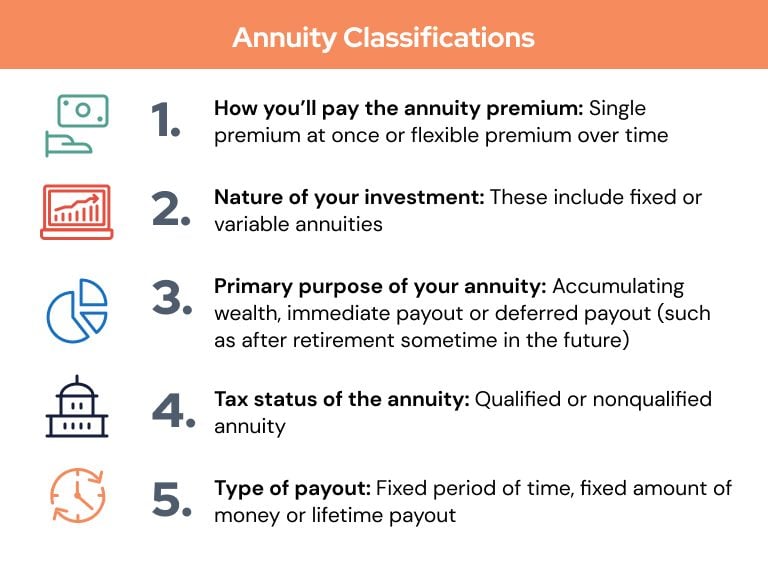All Categories
Featured
Table of Contents
This five-year basic rule and two adhering to exceptions use just when the owner's death sets off the payout. Annuitant-driven payouts are discussed below. The very first exception to the basic five-year guideline for specific beneficiaries is to approve the death advantage over a longer duration, not to go beyond the expected lifetime of the beneficiary.
If the recipient chooses to take the fatality advantages in this approach, the advantages are tired like any kind of other annuity repayments: partly as tax-free return of principal and partially gross income. The exemption proportion is discovered by utilizing the deceased contractholder's cost basis and the expected payouts based on the recipient's life span (of shorter period, if that is what the beneficiary selects).
In this method, often called a "stretch annuity", the beneficiary takes a withdrawal every year-- the required quantity of annually's withdrawal is based on the very same tables utilized to calculate the needed circulations from an individual retirement account. There are 2 benefits to this technique. One, the account is not annuitized so the beneficiary preserves control over the cash money worth in the contract.
The 2nd exception to the five-year guideline is available only to an enduring partner. If the designated recipient is the contractholder's partner, the partner might choose to "tip right into the shoes" of the decedent. Effectively, the spouse is treated as if he or she were the proprietor of the annuity from its creation.
Structured Annuities and beneficiary tax considerations
Please note this applies just if the spouse is named as a "marked beneficiary"; it is not offered, for example, if a count on is the beneficiary and the spouse is the trustee. The general five-year guideline and both exceptions only relate to owner-driven annuities, not annuitant-driven contracts. Annuitant-driven agreements will certainly pay survivor benefit when the annuitant dies.

For functions of this discussion, think that the annuitant and the proprietor are various - Immediate annuities. If the contract is annuitant-driven and the annuitant passes away, the fatality triggers the fatality benefits and the recipient has 60 days to determine exactly how to take the survivor benefit based on the regards to the annuity contract
Additionally note that the choice of a partner to "enter the shoes" of the owner will not be offered-- that exception applies just when the owner has actually died yet the owner really did not die in the circumstances, the annuitant did. Lastly, if the recipient is under age 59, the "death" exemption to prevent the 10% fine will certainly not relate to a premature circulation once more, because that is offered only on the death of the contractholder (not the death of the annuitant).
Lots of annuity firms have inner underwriting plans that reject to provide contracts that call a various proprietor and annuitant. (There might be odd scenarios in which an annuitant-driven contract fulfills a clients distinct demands, but a lot more usually than not the tax downsides will certainly surpass the benefits - Fixed annuities.) Jointly-owned annuities might position similar problems-- or at the very least they may not offer the estate planning function that jointly-held possessions do
As a result, the survivor benefit should be paid within 5 years of the very first proprietor's death, or based on the two exemptions (annuitization or spousal continuation). If an annuity is held collectively in between a hubby and partner it would appear that if one were to die, the various other could merely proceed possession under the spousal continuance exemption.
Presume that the spouse and wife called their kid as beneficiary of their jointly-owned annuity. Upon the fatality of either proprietor, the firm has to pay the survivor benefit to the boy, that is the beneficiary, not the surviving partner and this would possibly defeat the owner's purposes. At a minimum, this instance mentions the intricacy and unpredictability that jointly-held annuities present.
Tax treatment of inherited Annuity Payouts
D-Man composed: Mon May 20, 2024 3:50 pm Alan S. composed: Mon May 20, 2024 2:31 pm D-Man composed: Mon May 20, 2024 1:36 pm Thank you. Was really hoping there might be a device like establishing up a beneficiary individual retirement account, yet resembles they is not the instance when the estate is setup as a recipient.

That does not identify the sort of account holding the acquired annuity. If the annuity remained in an inherited individual retirement account annuity, you as administrator ought to have the ability to assign the acquired individual retirement account annuities out of the estate to acquired Individual retirement accounts for each estate recipient. This transfer is not a taxable occasion.
Any type of circulations made from inherited IRAs after job are taxable to the beneficiary that got them at their average earnings tax obligation price for the year of distributions. If the inherited annuities were not in an Individual retirement account at her death, after that there is no method to do a straight rollover into an inherited IRA for either the estate or the estate recipients.
If that takes place, you can still pass the distribution via the estate to the specific estate beneficiaries. The tax return for the estate (Form 1041) can consist of Type K-1, passing the income from the estate to the estate recipients to be tired at their private tax obligation prices rather than the much higher estate income tax obligation rates.
Do beneficiaries pay taxes on inherited Period Certain Annuities

: We will create a plan that includes the very best items and features, such as boosted survivor benefit, costs incentives, and long-term life insurance.: Obtain a personalized approach created to maximize your estate's value and minimize tax obligation liabilities.: Carry out the chosen strategy and get ongoing support.: We will certainly help you with establishing the annuities and life insurance coverage policies, giving continual guidance to guarantee the plan remains reliable.
However, must the inheritance be concerned as an income associated with a decedent, then taxes might apply. Typically speaking, no. With exemption to retirement accounts (such as a 401(k), 403(b), or IRA), life insurance coverage proceeds, and savings bond passion, the recipient normally will not have to bear any kind of earnings tax on their acquired wide range.
The amount one can acquire from a depend on without paying tax obligations depends on numerous elements. The federal estate tax obligation exemption (Immediate annuities) in the USA is $13.61 million for people and $27.2 million for married couples in 2024. Private states might have their very own estate tax obligation regulations. It is suggested to talk to a tax expert for accurate details on this issue.

His mission is to simplify retired life planning and insurance coverage, making sure that customers comprehend their choices and protect the very best protection at unbeatable rates. Shawn is the owner of The Annuity Professional, an independent on the internet insurance coverage company servicing customers throughout the United States. Via this platform, he and his group purpose to eliminate the guesswork in retirement preparation by aiding individuals discover the very best insurance protection at one of the most affordable rates.
Table of Contents
Latest Posts
Exploring Fixed Vs Variable Annuities A Comprehensive Guide to Investment Choices Defining the Right Financial Strategy Advantages and Disadvantages of Variable Annuities Vs Fixed Annuities Why Choosi
Highlighting Fixed Annuity Or Variable Annuity A Comprehensive Guide to Annuity Fixed Vs Variable Breaking Down the Basics of Fixed Vs Variable Annuities Benefits of Variable Annuity Vs Fixed Annuity
Exploring Fixed Vs Variable Annuities A Closer Look at How Retirement Planning Works What Is Fixed Annuity Or Variable Annuity? Advantages and Disadvantages of Different Retirement Plans Why Choosing
More
Latest Posts